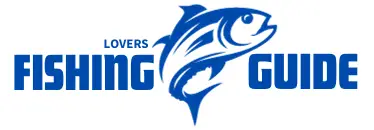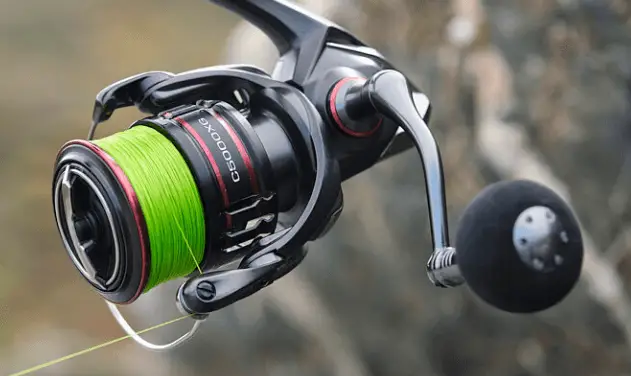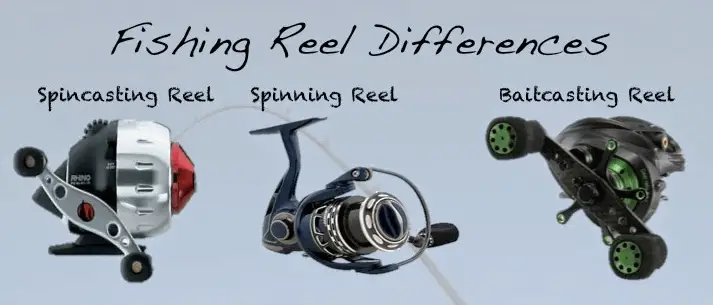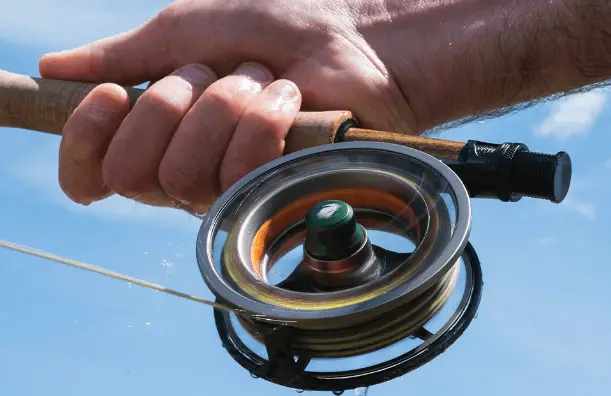Baitcaster reels come in three main types: round, low-profile, and deep spool. In the world of fishing, selecting the right baitcaster reel can make all the difference in your angling experience.
From round to low-profile and deep spool, there is a variety of baitcaster reels available, each with its own unique features and advantages. Understanding the different types and their applications can help you make an informed decision when it comes to choosing the best baitcaster reel for your fishing needs.
Whether you’re targeting largemouth bass, pike, or other freshwater gamefish, having the right baitcaster reel can enhance your casting distance, accuracy, and overall fishing performance. Let’s explore the types of baitcaster reels to help you identify the perfect fit for your fishing style and preferences.
1. Spincast Baitcaster Reels
- Spincast Reels are a popular choice among beginners and casual anglers due to their user-friendly design and ease of use. These reels are known for their simplicity, making them an excellent option for those who are new to baitcasting.
1.1 Basic Features
Spincast reels feature a closed face design, which encases the spool and line within a protective cover. This design helps prevent line tangles and backlash, making it easier for beginners to cast and retrieve without the fear of line snarls.
1.2 Pros And Cons
- Pros: Spincast reels are incredibly easy to use, making them suitable for beginners and those who prefer a hassle-free fishing experience. They also tend to be more affordable compared to other baitcaster reel types.
- Cons: While spincast reels are great for beginners, they may lack the versatility and precision offered by other types of baitcaster reels. Additionally, they have a lower line capacity and may not be suitable for targeting larger or more powerful fish species.
2. Spinning Reels
A spinning reel is a popular choice among anglers due to its versatility and ease of use. With its unique design, a spinning reel allows for smooth casting and retrieving of the fishing line, making it ideal for various fishing techniques.
2.1 Basic Features
Spinning reels are characterized by their open-faced design, with the fishing line wrapped around a stationary spool. The bail, which is the wire-like part that flips open and closed, helps to guide the line smoothly during casting while preventing tangles. The drag system, located at the front or rear of the reel, allows anglers to adjust the resistance applied to the line when a fish is hooked.
2.2 Pros And Cons
Spinning reels offer several advantages, such as ease of use, versatility for various fishing techniques, and the ability to handle lighter lines and lures. However, they also have limitations, including reduced casting distance compared to baitcasting reels and a tendency for the line to twist or loop during casting.
3. Baitcasting Reels
When it comes to fishing reels, one popular option among anglers is the baitcaster reel. These reels offer versatility, accuracy, and control, making them a preferred choice for many fishing enthusiasts. In this article, we’ll dive into the world of baitcaster reels and explore their basic features and how to cast baitcaster , as well as the pros and cons that come with using them.
3.1 Basic Features
Baitcaster reels, also known as baitcasting reels, are designed with a horizontal spool that sits on top of the fishing rod. They have a unique braking system that allows anglers to control the speed and distance of their casts with precision. Here are some of the basic features of baitcaster reels:
- Gear Ratio: Baitcaster reels typically have a gear ratio that determines the speed at which the spool turns. A higher gear ratio means faster retrieval, while a lower gear ratio provides more power.
- Drag System: These reels come equipped with a drag system that allows anglers to control the amount of resistance on the line when a fish is pulling. This feature is crucial for preventing line breakage and landing big fish.
- Braking System: One of the key features of baitcaster reels is the braking system, which helps control the spool’s rotation during casting. There are two main types of braking systems: centrifugal and magnetic. Centrifugal brakes use friction to slow down the spool, while magnetic brakes utilize magnetic forces.
- Spool Tension: Baitcaster reels have a spool tension knob that adjusts the tension on the spool. This helps prevent backlash or “bird’s nest” formations when casting.
3.2 Pros And Cons
Like any fishing reel, baitcaster reels have their own set of advantages and disadvantages. Let’s take a closer look:
| Pros | Cons |
|
|
Now that we’ve explored the basic features, pros, and cons of baitcaster reels, you can make an informed decision based on your fishing style and preferences. Whether you’re a seasoned angler looking for more control or a beginner willing to put in the practice, baitcaster reels can open up a world of possibilities on the water.
4. Fly Reels
Fly reels are a popular choice among anglers, especially for those who enjoy fly fishing. This type of baitcaster reel is specifically designed to be used with lightweight fly fishing rods and lines. Whether you are a beginner or an experienced angler, understanding the basic features and pros and cons of fly reels can help you make an informed decision.
4.1 Basic Features
Fly reels have distinct features that set them apart from other types of baitcaster reels. Here are some of the essential features:
- Large Arbor Design: Fly reels typically have a large arbor design, which means that the diameter of the spool is larger compared to other reels. This provides several advantages such as faster retrieval, increased line capacity, and reduced line memory.
- Drag System: Fly reels are equipped with a drag system that allows you to control the tension on the line. This is crucial when fighting powerful fish, as it helps prevent line breakages and reduces the chances of losing your catch. The drag system can be either click-and-pawl or disc drag, with the latter being more common in modern fly reels.
- Clicker Mechanism: Fly reels often feature a clicker mechanism, which produces a clicking sound when line is being pulled out. This serves as an audible indication when a fish takes the bait, providing an exciting tactile experience for anglers.
- Weight: Fly reels are generally lightweight to complement the lightweight nature of fly fishing rods. This allows for easier casting and better maneuverability during intense fishing sessions.
4.2 Pros And Cons
Like any fishing equipment, fly reels come with their own set of advantages and disadvantages. Here are some of the pros and cons you should consider:
| Pros | Cons |
|
|
5. Trolling Reels
When it comes to baitcaster reels, trolling reels are a popular choice among anglers who are looking to catch large, deep-water fish. These reels are specifically designed for trolling, which allows for a hands-free approach to fishing as the angler’s boat moves slowly through the water, dragging the bait or lure behind. Trolling reels offer several advantages and unique features that make them perfect for this kind of fishing.
5.1 Basic Features
Trolling reels typically have a sturdy, compact design that can withstand the heavy strain of reeling in powerful fish. They often feature a high line capacity, allowing for the use of heavier fishing lines and greater resistance to breakage. These reels are equipped with a level-wind system that evenly distributes the line as it is reeled in, preventing tangles and ensuring smooth operation. Additionally, trolling reels have a powerful drag system that can handle the intense fight of larger fish.
One of the essential features of trolling reels is their line counter. This handy tool measures the amount of line that has been let out, helping anglers maintain consistency and precision while trolling at specific depths. It enables them to replicate successful fishing patterns and target fish at the right depth.
5.2 Pros And Cons
Pros:
- Trolling reels allow for precise control over depth and bait presentation, increasing the chances of enticing fish to bite.
- The line counter feature helps anglers replicate successful fishing patterns and improve their overall catch rate.
- These reels are designed to handle heavier lines and larger fish, making them ideal for targeting trophy-sized species.
- The level-wind system ensures tangle-free operation, minimizing frustrations while out on the water.
- Trolling allows anglers to cover large areas of water, increasing the chances of finding actively feeding fish.
Cons:
- Trolling reels can be more expensive compared to other types of baitcaster reels due to their specialized features.
- They may require some practice and adjustment to master the art of trolling effectively.
- Trolling reels are generally heavier and bulkier than other reels, which could affect the overall balance and maneuverability of the fishing setup.
- Anglers need access to a trolling motor or the ability to troll from a boat to fully utilize these reels and their advantages.
Despite the potential drawbacks, trolling reels are an excellent investment for anglers targeting larger fish in deep waters. The unique features and precise control they offer can significantly improve the success rate and overall experience of trolling fishing. With proper practice and understanding, anglers can enjoy the benefits and make the most out of their trolling reel.
Last Word
Understanding the different types of baitcaster reels is essential for successful fishing. Whether you’re a beginner or an experienced angler, choosing the right reel can greatly impact your fishing experience. From the low-profile baitcaster to the round baitcaster, each type offers unique features and benefits.
By considering your fishing style, target species, and personal preferences, you can make an informed decision and enhance your chances of landing that big catch.
Happy fishing!



